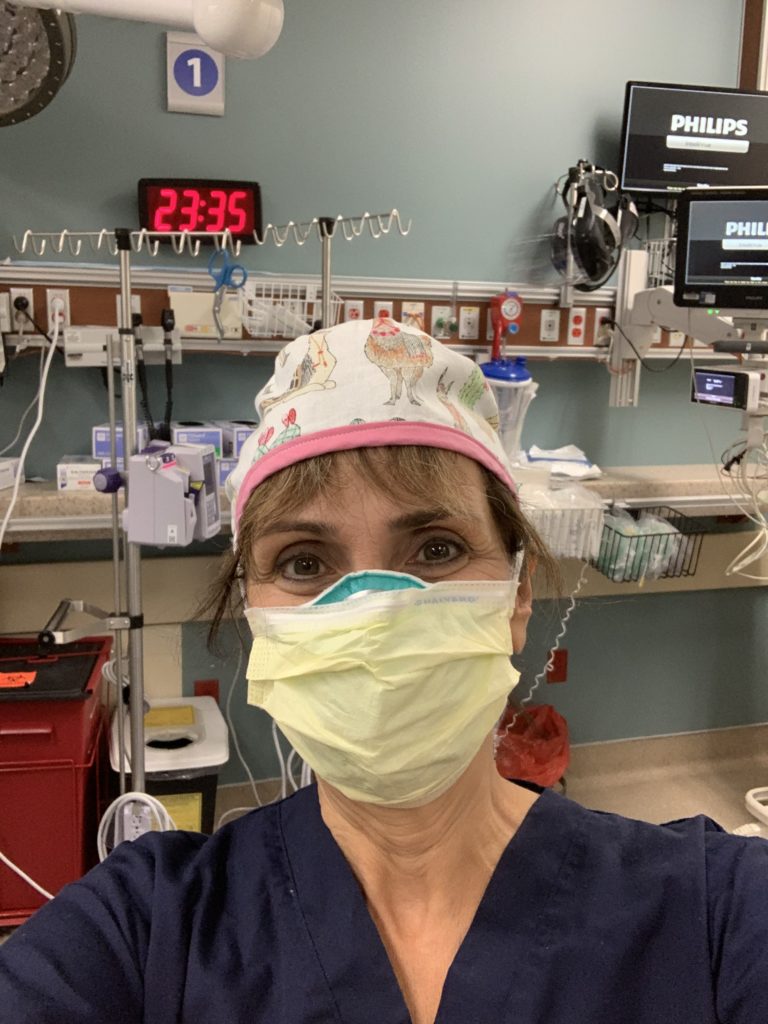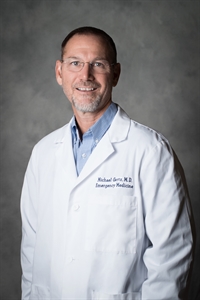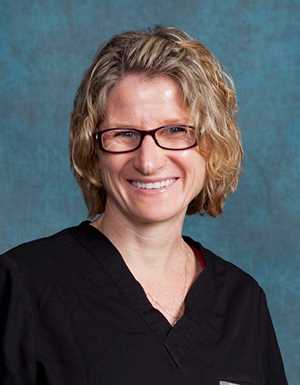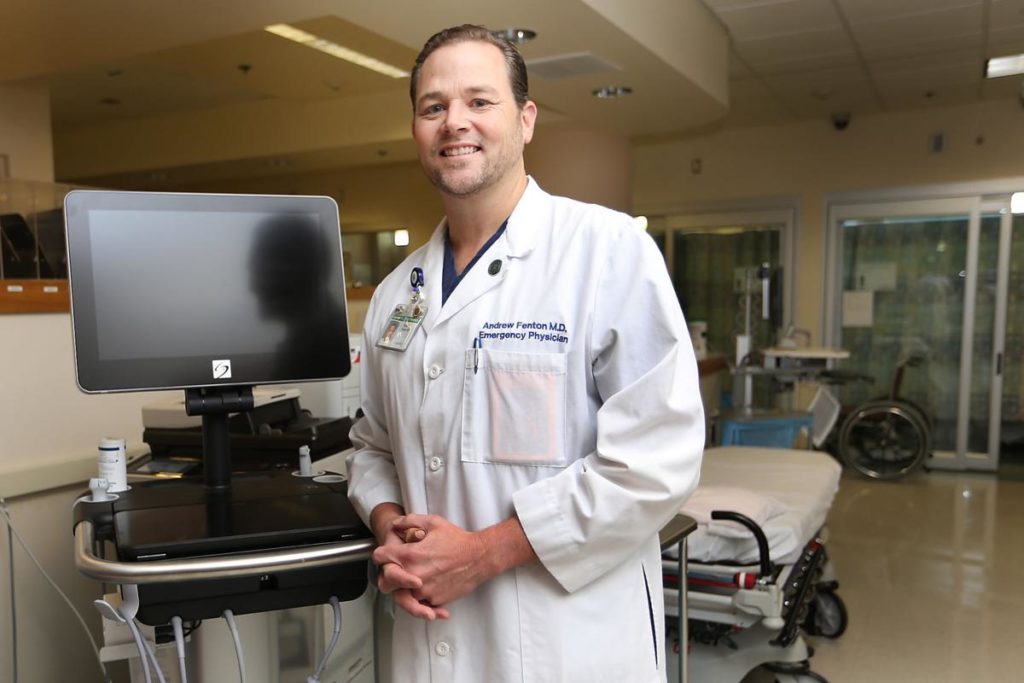Click here to view the PDF of the newsletter. All source links are included in the PDF version.
In This Issue:
- Where is the Public and the Health in Drug Policies?
- CalACEP an Ally for Independent Emergency Doctors
- A collision of epidemics: Coronavirus disrupts addiction
- treatment
- Lev Featured on Episode of Frontline Podcast
- Fenton Receives ACEP Meritorious Service Award
Where is the Public and the Health in Drug Policies?
Roneet Lev, MD
President, IEPC

The original article was published as “Good public health policies comes at the cost of an individual’s convenience. I see it in the ER,” on December 4, 2020 by the San Diego Union-Tribune. Reprinted with permission.
The emergency department is often the place one sees the carnage at the other end of failed policies. We see that with COVID-19, traffic collisions, and drugs.
Public health means caring about the overall health of a population. The CDC definition of public health is “the science of protecting and improving the health of people and their communities.” Public health policies calculate and balance individual behavior and preference, economics, and the benefit for the community at large.
Sometimes good public health policies come at the cost of an individual’s convenience. A classic example of such a health policy is wearing masks to prevent the spread of COVID-19. Who likes wearing a mask? I don’t. It hurts my face. I have a near-permanent red scar on the bridge of my nose for wearing it hours at a time at work and outside. The discomfort is worth it, because masks wore when in close contact with others prevents the spread of COVID-19. Masks are annoying for the individual, but the sacrifice is a wise public health policy.
Another example of a successful public health measure is seat belts. My first car was an orange 1972 Volkswagen Beetle that came with a useless lap belt that was way too big for me. I recall the debate by people who did not like the restrictions of seatbelts and claimed that mandatory seatbelts violated their freedom and constitutional rights. According to the National Highway Traffic Safety Administration, in 1990, only 50% of Americans wore seatbelts. Now seatbelts are a habit most people don’t even think about. Today, 90% of people buckle up. This public health policy saved 15,000 lives in 2016 and would have saved 2,500 more if everyone complied.
Today motorcyclists still complain that helmets cause headaches, tunnel vision, and “it’s nobody’s business if I want to feel the wind in my hair.” In the emergency departments and trauma centers, motorcycles accidents had an association of brain death injuries resulting in organ donation. Helmet laws changed that. In 2016, helmets saved 1,859 motorcyclists’ lives and 802 more lives could have been saved if all motorcyclists had worn helmets. I would argue that it has proven to be a worthwhile inconvenience.
American innovation, regulation, and focus on traffic safety continues to save lives. Traffic fatalities peaked in 1937 with 30.8 deaths per 100,000 population. The most recent data from 2018 is 11.17 deaths per 100,000. This improvement of over 60% occurred despite a marked increase in total miles driven and number of cars on the road. Improved traffic safety was no accident. This remains a major focus on multiple levels. Individuals made sacrifices by wearing seatbelts and helmets. The automotive industry introduced advanced engineering such as airbags, electronic stability, backup cameras and blind spot detection. Government worked on improved roads and traffic laws.
I am jealous of the efforts for car safety. We desperately need the same multi-disciplinary approach for drugs and addiction. Sadly, wise public health decisions are getting pushed aside for economic benefit and the call for individual freedom. For example, electronic cigarettes hit the market without appropriate public health consideration. The industry used an untested health claim that vaping helps tobacco cessation to promote their products. However, epidemiologic studies show that for every one adult who quits cigarettes using e-cigarettes, 80 adolescents who never smoked will eventually become daily smokers through e-cigarette use. We may have forgotten that just before the COVID-19 pandemic we were dealing with a vaping epidemic that caused severe lung injury known as EVALI – E-Cig Associated Lung Injury. As an emergency and addiction physician I feel for those addicted to nicotine and would offer treatment. However, if we followed the science and cared about public health, vaping products would never have come to market in the United States.
Similarly, marijuana legalization, both medically and recreationally is driven by economics and individual freedoms, rather than public health consequences. Public health consideration would account for the total associated increase drug use, increase emergency visits, and the various medical complications. I do not wish to judge or shame people who choose to use marijuana, but I strongly believe that the public has the right to informed decisions. People who smoke cigarettes understand the risks of addiction, cancer, emphysema and heart disease. People who use marijuana are sold on the multiple benefits without education on drug interactions with prescription medications, high potency psychosis and suicide, testicular cancer, pulmonary or heart risk. California declared marijuana an important business during a pulmonary pandemic. This public health decision continues to bring marijuana toxicity patients to the emergency department with diagnoses such as psychosis, agitation, EVALI, scromiting (cannabis hyperemesis syndrome), and fainting.
San Diego leads the county with one of the best trauma systems in the world. Saving a trauma patient can require a blood transfusion, but for the bleeding to stop, the hole needs to be plugged. Many lives have been saved not just through blood, but with advanced surgical techniques that plug the bleeding hole. Similarly, saving a patient with a substance use disorder needs addiction treatment, like the critical blood transfusion for the trauma patient. The bleeding hole for addiction needs to be plugged by decreasing the supply of drugs as well as treatment of overdoses, withdrawal and poisoning. But that is not enough. Benjamin Franklin said an ounce of prevention is worth a pound of cure. It is estimated that for every $1 spent on addiction prevention, there is $18 in savings. Addiction prevention is the seatbelts, helmets, and traffic laws for the trauma centers. Addiction prevention means preventing any addictive substance use while the brain is growing. Brain development continues until age 25 or 27. The chances of addiction for someone under this age is 4 – 7 times higher than for older people. Policies that promote increase marijuana and drug use along with the normalization of drugs, sacrifice our youth and therefore our future for the benefit of the individual. We need strong public health consideration when it comes to drug policy.
CalACEP an Ally for Independent Emergency Doctors
Michael Gertz, MD
Antelope Valley Hospital and
Los Robles Hospital Medical Center

The California Chapter of the American College of Emergency Physicians (CalACEP) is the largest state chapter in the country with over 3500 members. CalACEP’s mission is to support emergency physicians in providing the highest quality of care to all patients and to their communities. It supports Emergency Physicians primarily through legislative advocacy but additionally provides clinical tools such as The Safe Prescribing toolkits and Medication assisted Therapy (MAT) toolkits. CalACEP sponsors the Western Journal of Emergency Medicine and an annual Conference called AdvaneED which targets the education of Residents and Medical Students.
While last year was primarily consumed by the challenges of Covid19, the legislature continued to work and CalACEP remained active in both supporting and opposing multiple measures. The quarantine made lobbying particularly challenging in that our normal avenues for accessing legislators was impeded allowing politicians to fast-track a number of laws without much input from interest groups. There were, however, some successes as well.
AB 890 better known as the Nurse Practitioner Scope of Practice Law allows NPs to practice independently without physician supervision once they have a predetermined level of experience. It was intended to aid in the primary care shortage but the law could impact Emergency Physicians by not specifying that independent practice is limited to primary care. CalACEP opposed this as a patient safety issue and sought an exclusion for the Emergency department. Unfortunately the Governor signed this into law and we will need to work to clean up the law with an exclusion this year. We were successful in passing our sponsored bill AB1544 which expands paramedic scope of practice to allow certain 911 patients to be diverted to Licensed Psychiatric facilities and sobering centers. We were opposed to similar bills in the past because they did not provide sufficient oversight over the receiving facilities. This law requires licensing of facilities, support of EMTALA mandates and evidence based practices to determine protocols. We were also successful in protecting the $20 million state grant that pays for Substance abuse councilors to be placed in Emergency departments.
This years priorities will include a reintroduction of a CalACEP sponsored bill tabled by the legislature last year to require all acute care psychiatric facilities to accept patients with psychiatric emergencies transferred from emergency departments regardless of insurance status. We will also be focusing on legislation to address systematic downcoding by insurance companies. We will likely have to defend another attack on MICRA this coming year as well.
CalACEP is the primary advocacy group for Emergency Physicians in California. The Board of Directors and staff work tirelessly to make sure our practice environments remain financially viable, continue to be able to deliver high quality care and that emergency physicians are the recognized leaders of an emergency response system. Please consider lending your experience and expertise by serving on one of its committees or running for the Board of Directors. Independent practice physicians have so much to offer and gain from the experience.
A collision of epidemics: Coronavirus disrupts addiction treatment
By Rachel Baker
Original article was published June 16, 2020 via CalMatters.
Breanna Dixon doesn’t remember struggling to breathe when she overdosed, but her younger brother Joshua hasn’t forgotten the sound.
At first, it sounded like heavy snoring coming from the TV room in the Dixon family home in Fontana, where the siblings were sheltering in place with their parents.
It had been a month since the novel coronavirus forced California to a standstill, and Dixon, 28, was struggling. She had already overdosed twice before in the two years she had used opioids. Stuck at home with her family and a soon-to-be-ex-boyfriend, she found herself using more than ever.
While other people were hoarding water and toilet paper, Dixon stocked up on oxycodone pills that turned out to be tainted with fentanyl, a dangerous, potent opioid.
“The stress of not knowing what’s going to happen in the world, and then on top of that having to deal with the little things inside my home,” she said. “I needed to cope with a lot of things, because I felt like I couldn’t fix it … and I felt like I already hurt my family so much.”
That night in April, Joshua Dixon, 23, could tell something was off with his sister, who pivoted from jittery to groggy. So at 4 a.m., when he heard what he thought was loud snoring, he checked on her.
He found her sitting up, her head drooping forward onto her chest.
“I looked closer, and I was like, okay that’s not snoring — so I kind of snapped into panic mode … started shaking her on the shoulder, like, ‘Wake up!’” Joshua Dixon said. “She wasn’t waking up.”
He called an ambulance, and Breanna’s ex-boyfriend stayed on the phone with the 911 operator until the paramedics arrived with naloxone, a drug that can reverse overdoses.
But the night wasn’t over: About an hour later, Joshua Dixon found his sister’s ex-boyfriend crumpled in the backyard. He had overdosed, too.
A “collision of epidemics”
It’s a crisis that mental health experts worry they’ll see more often as people turn to illicit drugs to cope with the stressors of the pandemic. This “collision of epidemics” could magnify the dangers of both, according to warnings reverberating from scientific journals.
While the number of Californians killed by the coronavirus is tallied daily on public dashboards, its effect on illicit methamphetamine and opioid use is harder to track. Whether more people statewide are relapsing or overdosing is unclear.
But several local health departments in California as well as emergency rooms participating in a statewide treatment effort are seeing signs that fewer people addicted to drugs are receiving treatment since the pandemic reached California. The Public Health Institute’s CA Bridge Program reported 35% fewer people with opioid addictions in emergency rooms, dosed nearly 48% fewer people with medication to treat withdrawal and recorded 24% fewer people attending follow-up appointments, comparing April to January.
Experts worry that more people will fall through the cracks as the pandemic continues. And without increased state funding, budget cuts could hamstring their capacity to help.
“Fewer people are seeking treatment for services during this time period, but an increase in relapses has been noted for those who are involved in treatment,” said Jeffrey Nagel, director of Orange County’s Behavioral Health Services, which monitors trends at treatment providers.
The nation has seen it before: During previous economic downturns, more people died from opioid overdoses, but fewer people entered treatment for heroin addictions.
“There’s likely much more use of substances that we’re not capturing right now, either in hospitals or emergency rooms or jails,” said Gary Tsai, interim director of Los Angeles County’s division of Substance Abuse Prevention and Control. “There is a lot of concern that pent-up cases will materialize once our communities reopen. I think that’s a very real risk.”
The toll of opioids has been increasing in California over the past two decades. More than 4,386 people died from drug overdoses during the first nine months of 2019, about half from opioids, according to the state’s preliminary count.
It’s too soon to know whether more Californians are overdosing since the pandemic began.
Fresno has seen a surge in suspected overdose deaths, although the exact numbers are unavailable, said Rais Vohra, the county’s interim health officer. Many other coroner’s offices said there are too many bodies awaiting toxicological tests to identify any pattern. “I really think this is the tip of a bigger iceberg,” Vohra said.

“Feeling irrelevant” in the time of COVID
The “collision of epidemics” endangers people who use drugs on multiple fronts. They face increased risks from respiratory infections if smoking and vaping drugs has damaged their lungs or if opioids suppress their breathing.
But the virus’s social-distancing measures also tear the fabric of medical care and social support for people who use drugs, Nora Volkow, director of the National Institute on Drug Abuse wrote in a recent paper.
“Feeling irrelevant, feeling that no one cares for you, is probably one of the most devastating feelings a human being can have,” Volkow said in a recorded videoconference. It can “increase dramatically the risk of taking drugs, and, if you are trying to stop taking drugs, it increases that risk of relapse.”
Weeks before Breanna Dixon overdosed in Fontana, Crystal Acosta in Oakland said she was thinking of quitting drugs, and 60-year-old William Smith was relapsing in Los Angeles.
Acosta, 33, who first took heroin when she was 11, lived in a tent with her partner as the pandemic intensified. She fears what she’ll do if drugs become scarce, struggles to stay safe on the streets and worries about their son, who lives with his grandfather.
“When you do heroin, you get sick and it’s bad when you don’t have those drugs,” she said. “I’ve been thinking about getting clean, just to not have to deal with that.”
Acosta said she had been treated with methadone, which can help reduce cravings and symptoms of withdrawal. But it was expensive to travel to a clinic on the bus, so she stopped going.
Some 370 miles to the south, in Los Angeles, the pandemic kicked off a chain reaction that led Smith, a former cast member on the TV show Celebrity Rehab, to relapse.
Smith said he’d been in show business for years and worked for a drug cartel, but first tried heroin when he was incarcerated in Chino. He had been in recovery on and off for about 20 years when the coronavirus began creeping into California.
He was working as a caregiver, but the job was coming to an end, and with it, his housing.
With his future uncertain, he relied on Narcotics Anonymous meetings to keep sober. “Worst thing I can be is bored and by myself,” he said. “That’s when you jump up and go to a meeting, and you start listening to people’s woes and problems … It’s camaraderie, and friendship.”
But the pandemic forced his meetings online, and he ran out of cell phone data for Skype. His prescription for a medication that curbs opioid cravings and blunts the high tapped out. “For a couple days, you’re okay,” he said.
And then, he wasn’t. He started smoking heroin and methamphetamine again. “I felt terrible, I knew that’s not the way I wanted to be,” Smith said. “And I knew the way to get back.”

New cracks in the road to treatment
Dr. Reb Close, an emergency medicine physician at Community Hospital of the Monterey Peninsula, is trying to track the number of people like Dixon, Smith and Acosta whose drug use has changed with the pandemic.
Typically her department’s record system alerts her to one overdose roughly every three days. (It’s not the total, more of a preliminary snapshot.) But in May, alerts surged to an overdose a day, she said.
“You’ve got the experimenters,” Close said, recalling a teen boy who overdosed on what was likely an opioid. His mother started CPR until the cops arrived with naloxone, which can reverse overdoses. The boy later told Close he’d tried the drug because he was bored sheltering at home.
By Close’s count, three of 22 people who overdosed in March said their drug use was related to the virus. In April, it was seven out of 16. She hasn’t crunched numbers for May yet.
“You’ve got your substance use fragility of recovery,” Close said. And, with the pandemic, she said, “You have the fear, the hopelessness, the desperation.”
Smith knew where to go when he relapsed. His friend helped him find a bed at Tarzana Treatment Centers.
“I really didn’t think they’d have Tarzana or any of these big treatment centers still open,” he said. “A lot of people would have died if they didn’t have Tarzana.”
The number of people seeking treatment at Tarzana increased from 2019 to 2020, and the centers have been racing to add beds to meet demand.
But since the beginning of this year, the number of people seeking care has dropped monthly.
It’s difficult to separate the effects of the pandemic from seasonal trends, since people seeking treatment typically spikes in January and February, said Jim Sorg, Tarzana Treatment Centers’ director of care integration.
But patients’ fear of the virus could be a reason for the decline. Smith was “a little scared to get around other people, of course, and I didn’t know how they would manage to keep us safe. I had to see it for myself.”
What he saw were mask requirements, constant cleaning, multiple temperature checks per day, no outside meetings or visitors and as much social-distancing as possible.
Smith said that the changes haven’t hurt his recovery — they may have even helped.
“The fight against COVID is like the fight against addiction, so one hand just clasping the other,” he said. “It’s watching out for your neighbor, so your mind is constantly on something that’s positive.”
Officials in some counties with historically high numbers of overdose deaths report declines in people seeking or being admitted to treatment this year. Included are Sacramento, Santa Clara, Orange, San Diego, Riverside and Alameda counties. San Bernardino also saw an initial drop, although the numbers began increasing in May.
Part of the reason could be that federal rules have changed during the pandemic to allow people to take home more methadone at a time, which means fewer visits tallied at clinics. One woman told CalMatters that it made getting her medication much easier.
Some people may also not be accessing outpatient services due to closures or fewer referrals, including from courts and schools. Some residential programs are limiting admissions to maximize social distancing, and a shift to telehealth could have lost those who lack access to a phone or the internet.
“Generally speaking, lockdown equals lack of access to critical services,” said Nevada County’s Behavioral Health Director Phebe Bell. “What we’re seeing is that people continued to be fearful of in-person services, but needed help with their substance use.”
In some areas, people are seeking more treatment from addiction medications. San Francisco’s street medicine team reports writing two to three times more prescriptions than usual, while Los Angeles, Nevada County and a major Santa Clara County hospital also reported increased demand. Bell suspects that medication, which requires little in-person interaction, may feel like the safest option during a pandemic.
A worrying precedent during a recession
The picture of how the coronavirus will affect Californians addicted to drugs is still developing — but history can help bring it into focus.
One study led by Temple University economist Catherine Maclean reported that during economic downturns, treatment admissions for stimulants increased by almost 8% for every one percentage point increase in state unemployment. But for heroin, they dropped 6%.
Previous research showed an increase in opioid-related deaths and emergency department visits in economic slowdowns.
Combined, Maclean said the results suggest an increased unmet need for treatment — particularly for opioid addictions — during recessions.
The gap between need for treatment and access to it worries Aimee Moulin, an emergency medicine physician at the University of California Davis Medical Center.
The CA Bridge Program, where Moulin is a principle investigator, aims to close that gap. Patients at 50-plus hospitals who are addicted to opioids are immediately treated with buprenorphine, a medication to ease symptoms and cravings, and are connected with ongoing care. Over the past year, the program offered buprenorphine to 9,666 patients, and treated 6,207.
“Now we see people coming back — they couldn’t get their treatment appointment. There’s a lot of delays, a harder time getting medications,” Moulin said. “If it was a struggle before, it is so much more exacerbated by closing down or pulling back on a lot of those resources.”
Breanna Dixon is one of the people who could have benefited from the CA Bridge Program.
The night she overdosed, an ambulance took her to a hospital. But eight hours later, she was back at home, sweating and crying on her mother’s couch. “I was withdrawing … I could feel it, so I was just like, ‘I’m going to use again,’ ” she said.
The period after being discharged from the emergency room is a dangerous one. A recent study reported that in the year after an opioid overdose, people are 100 times more likely to overdose again and die. Their likelihood of dying by suicide also increases 18-fold.
She searched for treatment programs that would take MediCal. It took her days to find a hospital where she could detox. The whole time, she said, her mother Jeannette Dixon kept telling her, “‘Just keep looking, keep looking.’”
Now she is in transitional housing after completing residential treatment.
“I miss her very much, but I know that this is good for her. She needs it,” said Jeanette Dixon, who has been in recovery herself for a crystal meth addiction since 2012. “Because who gets a third time — you know what I mean? She’s blessed.”
The state’s budget and crises collide
As the pandemic continues, treatment services are at risk of losing government funding.
Last year’s budget included $20 million to fund behavioral health counselors for hospitals. But California Gov. Gavin Newsom’s May budget revision scrapped it. The Legislature has proposed restoring it, but negotiations are ongoing.
In April, county behavioral health directors and 17 other groups sent a letter to the state Legislature seeking a hearing and emergency funding. So far, neither has happened.
Michelle Cabrera, executive director of the County Behavioral Health Directors Association, predicts a billion-dollar shortfall for counties’ behavioral health programs by next summer, at the same time as the number of people who depend on them is projected to swell.
The Legislature has proposed chipping in $1 billion for counties but $600 million is contingent on receiving federal money. Cabrera estimated that only $230 million would trickle down to behavioral health programs.
“It’s not going to be enough to stave off some of the harder decisions we’re going to have to make,” Cabrera said. “We’re leaving humans in the lurch.”
“We’re people too. We’re not just addicts.”
In the meantime, in Oakland, Crystal Acosta is already falling through the cracks. In April, she talked about the pandemic as a reason to get clean. Two months later, she said she was smoking twice as much heroin as before. Living without shelter amplifies the problem.
“We’re people too. We’re not just addicts,” Acosta said in April. “All of us have no help, or places like a house. And we’d be doing a lot better if we did.”
Alameda County is trying to address homelessness and addiction with counselors at some of the hotels set up for people during the pandemic.
For Acosta, though, it hasn’t helped. She spent weeks in a hotel but now is back on the streets. Her partner received an offer of housing, Acosta said, but turned it down because there wasn’t space for her. Now, they crash at friends’ places or walk all night, smoking heroin.
“It helps me relax to the point where I’m OK to deal with all of it,” she said.
After her disappointment about being homeless again, she’s less interested in seeking treatment. “If they’re not even willing to help me,” she said, “what’s the point?”
Lev Featured on Episode of Frontline Podcast
Cassie Chinn,
IEPC Communications Director

Hosted by Dr. Ryan Stanton, the official podcast of the American College of Emergency Physcians welcomed IEPC President Dr. Roneet Lev to discuss her tenure with the Office of National Drug Control Policy (ONDCP).
Ryan Stanton: How did you go from emergency medicine to working with the White House?
Roneet Lev: Through activity really through ACEP. I’ve always been active in medicine. We wear our white coat in the hospital but wear our white hat outside the hospital to really advocate for our patients and profession. I got involved in our local community. After serving as president for CalACEP I decided to use my time advocating locally. One day I was asked to do a presentation about why doctors are giving so many drugs to people. I went there and explained that people demand it! “Doc, what are you going to do for my pain?” We were taught to treat pain.
I met this community that I never would have been exposed to (in the ER) with these parents whose children died from these drugs we were prescribing. So, when I was confronted by other doctors who accused me of not being compassionate because they were prescribing more drugs to their patients, I was seeing the other side. I was meeting with the medical examiner and meeting with parents realizing that there was a problem. I became very active in established programs in San Diego in safe prescribing. I helped communities establish coalitions both locally and across the country. I thought, “If I was in charge, I could fix the world or end this epidemic. Just give me a few years and I could get it done.” They say be careful what you wish for because you may get it.
On one occasion I invited the director of the ONDCP James Carroll to come down to SD to see my emergency room to see what we have to deal with. He called me later that evening and took me up on my offer (to end the epidemic) and hired me as the Chief Medical Officer of the ONDCP.
Fenton Receives ACEP Meritorious Service Award

Walter T. Edwards Meritorious Service Award
Given by CalACEP at AdvancED 2020 to Dr. Andrew Fenton.
The Chapter’s highest honor, this award is given to a Chapter leader who, like Dr. Edwards, has distinguished themselves among their peers in the Chapter as demonstrating the highest commitment to emergency medicine and the Chapter, and who has made contributions to the Chapter that have significantly shaped its mission, vision, objectives or priorities.
Dr. Fenton’s years of service to the Chapter including one year as one of the Chapter’s first advocacy fellows, eight years on the Board Directors, and one year as President. During his time on the Board and as President, he brought a heightened awareness to the issue of firearm injury
prevention, ushering in CalACEP’s Firearm Policy in 2016. This was before many were comfortable taking a position on firearms, but Dr. Fenton believed a science-based approach to firearm violence prevention was the right thing to do to save lives. He also championed other public health issues including drug overdose prevention and pediatric trauma care. Even after his presidency, Dr. Fenton has been an active champion of emergency medicine and CalACEP and his leadership has had a profound impact on the organization and the patients of California.
